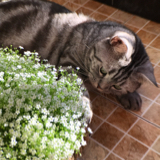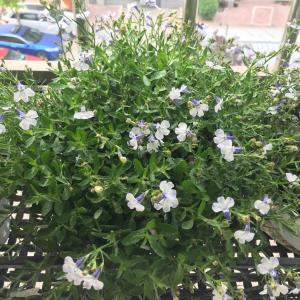文章
Miss Chen
2018年05月25日

Spike of FlowersDescription: This perennial wildflower is 3-12" tall, consisting of an unbranched flowering stalk, 1-2 basal leaves, and a few alternate leaves. Usually, individual plants are less than 7" tall. The basal leaves are 1-6" long and ¼-¾" across; they are lanceolate, oblanceolate, or elliptic in shape, while their margins are smooth. The alternate leaves are located along the lower half of the flowering stalk; they are often bladeless and sheath-like, but sometimes there are blades ¾-2½" long and about ¼" across. When alternate blades are present, they are narrowly lanceolate, oblanceolate, or elliptic, and their margins are smooth. Both basal and alternate leaves are medium to dark green and glabrous. The erect central stalk is medium to dark green, terete, and relatively narrow; it is glabrous below, becoming short-pubescent and glandular above. This stalk terminates in a spike of flowers about ¾-4" long. The flowers of each spike are densely arranged into 3-ranks (a double spiral). Each flower has 6 white tepals, a green ovary, and other reproductive organs. The tepals form a tubular corolla about 4-5 mm. long that is slightly curved and nodding. The corolla has an upper hood consisting of 3 fused tepals, a lower lip consisting of a single tepal, and 2 lateral tepals. As each flower develops, the lateral tepals become free toward the base and extend along the sides of the corolla. The lower lip extends to about the same length, or slightly beyond the hood. This lip is somewhat recurved, narrowly oval in shape, and its margins are slightly undulate and crisped. At the base of the lip, there is a pair of slender curved callosities (resembling minute claw-like extensions). The interior of the corolla is usually white, otherwise it is pale cream. The ovary is medium green, ovoid-oblongoid in shape, usually short-pubescent, and about 4-5 mm. long (although it becomes larger after the blooming period). Partially obscuring the ovary, there is a green bract (about 5-8 mm. in length) that is lanceolate-elliptic, short-pubescent, and glandular. The blooming period occurs during the early fall, sometimes extending into mid-fall. The flowers bloom from the bottom to the top of the raceme. Afterwards, the seed capsules develop, becoming about the same length as the bracts; they are sessile and ovoid-oblongoid in shape. Eventually, these capsules release numerous minute seeds that are carried aloft by air currents. The root system consists of a few roots that are fleshy and fibrous.
Cultivation: The preference is dappled sunlight to light shade, moist to mesic conditions that are well-drained, and soil containing loam or clay-loam with some decaying organic matter. In addition to these requirements, appropriate strains of a fungus or fungi should be present in the soil that can form a symbiotic association with the root system.

Range & Habitat: The native Lesser Ladies' Tresses has been found mostly in southern and central Illinois, where it is uncommon (see Distribution Map). However, this species appears to be slowly spreading into other parts of the state. Habitats include moist to mesic woodlands, rocky upland woodlands, open woodlands, areas along paths in woodlands, edges of swamps, and semi-shaded areas along abandoned fields. Lesser Ladies' Tresses appears to flourish when disturbance reduces competition from shrubs, trees, and tall vegetation. Such disturbance may be related to fire, wind storms, or human actions. In the wooded habitats where this wildflower occurs, the dominant trees are deciduous.
Faunal Associations: Various kinds of bees visit the flowers of Spiranthes spp. (Ladies' Tresses Orchids) for nectar, including bumblebees, Halictid bees, leaf-cutter bees (Megachile spp.), and little carpenter bees (Ceratina spp.). The foliage and flowers are browsed occasionally by mammalian herbivores, including the White-Tailed Deer, Cottontail Rabbit, and Groundhog. Because of its small size and inconspicuous nature, Lesser Ladies' Tresses can be overlooked by these herbivores, however.
Photographic Location: In a wooded area of a park in Champaign County, Illinois.
Comments: There are two varieties of Lesser Ladies' Tresses. The typical variety requires cross-pollination by insects to produce fertile seeds; it is found in several southern states. The other variety, Spiranthes ovalis erostella, has a more northern distribution that includes Illinois. This latter variety lacks some of the reproductive structures (specifically, the rostellum and viscidium) that prevent self-pollination. Therefore, in the absence of cross-pollination by insects, this variety of Lesser Ladies' Tresses is capable of self-pollination, increasing the likelihood that seeds will be produced. Lesser Ladies' Tresses can be distinguished from other Spiranthes spp. (Lady Tresses' Orchids) by its small size (typically 3-6" tall), small flowers (tepals less than 6 mm. long), and narrow flowering stalks. In particular, the base of the lower lip of each flower has a pair of slender curved callosities (resembling minute claw-like extensions) that are distinct for this species. In contrast, the callosities of a more common species, Spiranthes cernua (Nodding Ladies' Tresses), resemble a pair of wart-like protuberances at the base of the lower lip of each flower. This distinction usually requires a 10x hand lens to see.
Cultivation: The preference is dappled sunlight to light shade, moist to mesic conditions that are well-drained, and soil containing loam or clay-loam with some decaying organic matter. In addition to these requirements, appropriate strains of a fungus or fungi should be present in the soil that can form a symbiotic association with the root system.

Range & Habitat: The native Lesser Ladies' Tresses has been found mostly in southern and central Illinois, where it is uncommon (see Distribution Map). However, this species appears to be slowly spreading into other parts of the state. Habitats include moist to mesic woodlands, rocky upland woodlands, open woodlands, areas along paths in woodlands, edges of swamps, and semi-shaded areas along abandoned fields. Lesser Ladies' Tresses appears to flourish when disturbance reduces competition from shrubs, trees, and tall vegetation. Such disturbance may be related to fire, wind storms, or human actions. In the wooded habitats where this wildflower occurs, the dominant trees are deciduous.
Faunal Associations: Various kinds of bees visit the flowers of Spiranthes spp. (Ladies' Tresses Orchids) for nectar, including bumblebees, Halictid bees, leaf-cutter bees (Megachile spp.), and little carpenter bees (Ceratina spp.). The foliage and flowers are browsed occasionally by mammalian herbivores, including the White-Tailed Deer, Cottontail Rabbit, and Groundhog. Because of its small size and inconspicuous nature, Lesser Ladies' Tresses can be overlooked by these herbivores, however.
Photographic Location: In a wooded area of a park in Champaign County, Illinois.
Comments: There are two varieties of Lesser Ladies' Tresses. The typical variety requires cross-pollination by insects to produce fertile seeds; it is found in several southern states. The other variety, Spiranthes ovalis erostella, has a more northern distribution that includes Illinois. This latter variety lacks some of the reproductive structures (specifically, the rostellum and viscidium) that prevent self-pollination. Therefore, in the absence of cross-pollination by insects, this variety of Lesser Ladies' Tresses is capable of self-pollination, increasing the likelihood that seeds will be produced. Lesser Ladies' Tresses can be distinguished from other Spiranthes spp. (Lady Tresses' Orchids) by its small size (typically 3-6" tall), small flowers (tepals less than 6 mm. long), and narrow flowering stalks. In particular, the base of the lower lip of each flower has a pair of slender curved callosities (resembling minute claw-like extensions) that are distinct for this species. In contrast, the callosities of a more common species, Spiranthes cernua (Nodding Ladies' Tresses), resemble a pair of wart-like protuberances at the base of the lower lip of each flower. This distinction usually requires a 10x hand lens to see.
0
0
文章
Miss Chen
2018年05月18日

Description: This perennial wildflower forms a rosette of ascending to spreading basal leaves. Individual basal leaves are 6-12" long and 2-4" across; they are dull green, elliptic to ovate in shape, smooth along their margins, and hairless. The basal leaves have parallel veins and they are longitudinally pleated. During some years, Wood's Bunchflower produces an unbranched flowering stalk about 3-6' tall. Relatively few alternate leaves are located along the lower-half of each stalk. The alternate leaves are similar to the basal leaves, except their bases are more slender, and they become much smaller in size while ascending the flower stalk. The bases of these alternate leaves partially sheath each stalk. Each central stalk is light green, terete, and pubescent, terminating in an inflorescence about 1-2' long.
This inflorescence consists of either a narrow raceme or elongated panicle of flowers. On each inflorescence, the upper flowers are perfect, while the lower flowers are staminate (male). The peduncle, lateral branches, and pedicels of the inflorescence are light green and pubescent, becoming dark brown with age. When lateral branches are present, they are 2-8" long and ascending to spreading (usually the former). The pedicels of the flowers are short (less than ½" long). Usually, there are narrow leafy bracts less than ½" long at the bases of the branches and pedicels. Perfect flowers are ½-¾" across, consisting of 6 widely spreading tepals, a small superior ovary, 6 stamens, and 3 styles. The narrow tepals are reddish brown (maroon) overall. The tepals have pairs of dark red glands at their bases, while toward the middle of each tepal there is often a transverse band of pale green or pale yellow. The ovary of each flower is light green, finely short-pubescent, and ovoid-conical in shape. Staminate flowers are the same as perfect flowers, except they lack an ovary and styles. The blooming period occurs from mid- to late summer for about 1 month.

Afterwards, the perfect flowers are replaced by 3-celled seed capsules that become, when they are mature, about ¾-1" long and about one-half as much across. These capsules have 3 longitudinal lobes with sharp ridges; they are usually sparsely pubescent and change color from green to dark brown. Each capsule usually contains only 0-3 seeds, although sometimes there are more. The tan-colored angular seeds are up to ½" long and ¼" across. The root system is rhizomatous. Sometimes vegetative offsets develop from the rhizomes.
Cultivation: The preference is dappled sunlight or light shade, moist conditions, and a rich soil that is often derived from glacial till. This wildflower has very few problems with insects pests and disease organisms. In any given year, entire colonies of plants may fail to produce flowers.
Range & Habitat: The native Wood's Bunchflower is restricted to central Illinois, where it is uncommon. In the past, this wildflower was state-listed as 'threatened,' but it was recently removed from this list as additional colonies of plants were discovered. Wood's Bunchflower is uncommon throughoutDistribution Map its range; it occurs primarily in Indiana, Illinois, and Missouri. Habitats include north- or east-facing wooded slopes along rivers, areas near streams in hilly woodlands, and shaded ravines. This wildflower is restricted to high quality deciduous woodlands where the original ground flora is still intact.
Faunal Associations: Almost nothing is known about floral-faunal relationships for Wood's Bunchflower. The maroon-colored flowers are probably cross-pollinated by flies and beetles. The caterpillars of a highly polyphagous moth, Xestia smithii (Smith's Dart), reportedly feed on this or a closely related species. Generally, Melanthium spp. (Bunchflowers) and the closely related Veratrum spp. (False Hellebores) have foliage, roots, and seeds that are considered highly poisonous to mammalian herbivores. There is some evidence that these plants are teratogenic, causing fatal birth defects in sheep. However, it is not uncommon to encounter specimens of Wood's Bunchflower that have been partially eaten by White-Tailed Deer.
Photographic Location: The photograph of the basal leaves was taken on a wooded slope facing a river in Vermilion County, Illinois, while the photograph of the seed capsules was taken in a hilly woodland near a stream in Coles County, Illinois.
Comments: Taxonomists are still divided regarding the classification of this wildflower: Some authorities refer to this species as Melanthium woodii (Wood's Bunchflower), as described here, while others refer to it as Veratrum woodii (Wood's False Hellebore). Perhaps additional genetic analysis will be helpful in resolving this conflict. The large basal leaves of Wood's Bunchflower are very conspicuous. This is one of the tallest wildflowers to bloom in woodlands during the summer, but the flowers are not produced reliably from year-to-year. The reason for this inconsistent flowering is not clear. Wood's Bunchflower is closely related to Melanthium virginicum (Virginia Bunchflower), but the latter species is found in damp sunny habitats. Virginia Bunchflower has white flowers, rather than maroon ones, and its leaves are more slender than those of Wood's Bunchflower. Both species are unusual in having conspicuous glands at the bases of their tepals.
This inflorescence consists of either a narrow raceme or elongated panicle of flowers. On each inflorescence, the upper flowers are perfect, while the lower flowers are staminate (male). The peduncle, lateral branches, and pedicels of the inflorescence are light green and pubescent, becoming dark brown with age. When lateral branches are present, they are 2-8" long and ascending to spreading (usually the former). The pedicels of the flowers are short (less than ½" long). Usually, there are narrow leafy bracts less than ½" long at the bases of the branches and pedicels. Perfect flowers are ½-¾" across, consisting of 6 widely spreading tepals, a small superior ovary, 6 stamens, and 3 styles. The narrow tepals are reddish brown (maroon) overall. The tepals have pairs of dark red glands at their bases, while toward the middle of each tepal there is often a transverse band of pale green or pale yellow. The ovary of each flower is light green, finely short-pubescent, and ovoid-conical in shape. Staminate flowers are the same as perfect flowers, except they lack an ovary and styles. The blooming period occurs from mid- to late summer for about 1 month.

Afterwards, the perfect flowers are replaced by 3-celled seed capsules that become, when they are mature, about ¾-1" long and about one-half as much across. These capsules have 3 longitudinal lobes with sharp ridges; they are usually sparsely pubescent and change color from green to dark brown. Each capsule usually contains only 0-3 seeds, although sometimes there are more. The tan-colored angular seeds are up to ½" long and ¼" across. The root system is rhizomatous. Sometimes vegetative offsets develop from the rhizomes.
Cultivation: The preference is dappled sunlight or light shade, moist conditions, and a rich soil that is often derived from glacial till. This wildflower has very few problems with insects pests and disease organisms. In any given year, entire colonies of plants may fail to produce flowers.
Range & Habitat: The native Wood's Bunchflower is restricted to central Illinois, where it is uncommon. In the past, this wildflower was state-listed as 'threatened,' but it was recently removed from this list as additional colonies of plants were discovered. Wood's Bunchflower is uncommon throughoutDistribution Map its range; it occurs primarily in Indiana, Illinois, and Missouri. Habitats include north- or east-facing wooded slopes along rivers, areas near streams in hilly woodlands, and shaded ravines. This wildflower is restricted to high quality deciduous woodlands where the original ground flora is still intact.
Faunal Associations: Almost nothing is known about floral-faunal relationships for Wood's Bunchflower. The maroon-colored flowers are probably cross-pollinated by flies and beetles. The caterpillars of a highly polyphagous moth, Xestia smithii (Smith's Dart), reportedly feed on this or a closely related species. Generally, Melanthium spp. (Bunchflowers) and the closely related Veratrum spp. (False Hellebores) have foliage, roots, and seeds that are considered highly poisonous to mammalian herbivores. There is some evidence that these plants are teratogenic, causing fatal birth defects in sheep. However, it is not uncommon to encounter specimens of Wood's Bunchflower that have been partially eaten by White-Tailed Deer.
Photographic Location: The photograph of the basal leaves was taken on a wooded slope facing a river in Vermilion County, Illinois, while the photograph of the seed capsules was taken in a hilly woodland near a stream in Coles County, Illinois.
Comments: Taxonomists are still divided regarding the classification of this wildflower: Some authorities refer to this species as Melanthium woodii (Wood's Bunchflower), as described here, while others refer to it as Veratrum woodii (Wood's False Hellebore). Perhaps additional genetic analysis will be helpful in resolving this conflict. The large basal leaves of Wood's Bunchflower are very conspicuous. This is one of the tallest wildflowers to bloom in woodlands during the summer, but the flowers are not produced reliably from year-to-year. The reason for this inconsistent flowering is not clear. Wood's Bunchflower is closely related to Melanthium virginicum (Virginia Bunchflower), but the latter species is found in damp sunny habitats. Virginia Bunchflower has white flowers, rather than maroon ones, and its leaves are more slender than those of Wood's Bunchflower. Both species are unusual in having conspicuous glands at the bases of their tepals.
0
0
文章
Miss Chen
2018年05月16日

Description: Depending on its stage of development, this herbaceous perennial plant is about 3-12" tall. It produces only basal leaves that are about 3-5" wide and across. Each of these basal leaves is wrapped around the stalk of a single flower (sometimes two stalks are produced) as the flower begins to bloom. The basal leaves continue to unfold to their fullest extent as the flowers wither away. Each basal leaf is oval-orbicular in outline and palmate-reticulately veined, with 5-9 major lobes and several minor lobes along the undulating margins. The palmate-reticulate venation is fairly prominent and provides the rather succulent leaves with a wrinkly appearance, especially on their lower surfaces. The color of the leaves on the upper surface is light green, sometimes with greyish or bluish tints, while the lower surface is whitish green. The terete petioles are about 4" long and rather stout. The foliage of this plant is glabrous and glaucous.
The flowering stalk is terete, stout, glabrous, and sometimes slightly reddish, terminating in a single large flower. This stalk is about 3-4" tall when the flower begins to bloom. The flower is about 1½–3" across, consisting of 8-16 white petals, a green oval pistil, and numerous stamens with prominent yellow anthers. The pistil has a pale yellow stigma at its apex. There are 2 light green sepals that are nearly as long as the petals, but they fall off the flowering stalk as soon as the flower begins to bloom. The blooming period occurs from early to mid-spring, lasting about 2 weeks. Each flower remains in bloom for only 1 or 2 days (when it is sunny), producing a fragrant scent. Afterwards, each flower is replaced by a seed capsule that becomes enlarged and eventually turns yellow, splitting open to release its seeds. The root system consists of thick reddish rhizomes with coarse fibrous roots. Both the foliage and the rhizomes contain an acrid reddish juice. This plants often forms vegetative colonies.

Cultivation: During early to mid-spring, this plant should have access to some sunlight, otherwise the flowers may fail to open. After the trees begin to form leaves later in the spring, considerable shade is tolerated. The soil should be fertile and loamy, with average moisture levels (by woodland standards). The foliage is not affected by disease significantly, although it will gradually wither away as the summer progresses.
Range & Habitat: Bloodroot is a common plant that occurs in most counties of Illinois (see Distribution Map), where it is native. Habitats include rich deciduous woodlands, wooded slopes, edges of bluffs, shaded ravines, banks of rivers in wooded areas, and areas along woodland paths.

Faunal Associations: The pollen of the flowers attracts various kinds of bees, including honeybees, bumblebees, little carpenter bees (Ceratina spp.), Halictid bees (Halictus spp., Lasioglossum spp.), and Andrenid bees (Andrena spp.). Other insects that visit the flowers include Syrphid flies and beetles, which feed on the pollen (or search vainly for nectar). An aphid, Linosiphon sanguinarium, sucks plant juices from the leaf undersides. The seeds of Bloodroot are distributed by ants because of their fleshy appendages. This is a common method of seed distribution for woodland wildflowers, as wind speeds are greatly reduced in wooded areas. The foliage and rhizomes contain an acrid reddish juice and they are toxic. Consequently, this plant is not often eaten by mammalian herbivores, although White-Tailed Deer browse sparingly on the succulent leaves.

Photographic Location: A partially-shaded flower garden near Busey Woods in Urbana, Illinois.
Comments: Bloodroot is one of the spring ephemerals of deciduous woodlands. It has very showy flowers and unusual-looking, but attractive, foliage. Unfortunately, the flowers are relatively short-lived. Across different localities, there are significant variations in this plant, involving such characteristics as the number of petals and size of the flowers, and the appearance of the foliage. On rare occasions, light pink flowers are produced. The Amerindians created a red dye from the juice of the rhizomes. The juice of plants in this genus possesses anti-bacterial properties with possible pharmaceutical applications, including an anti-plaque mouthwash.
The flowering stalk is terete, stout, glabrous, and sometimes slightly reddish, terminating in a single large flower. This stalk is about 3-4" tall when the flower begins to bloom. The flower is about 1½–3" across, consisting of 8-16 white petals, a green oval pistil, and numerous stamens with prominent yellow anthers. The pistil has a pale yellow stigma at its apex. There are 2 light green sepals that are nearly as long as the petals, but they fall off the flowering stalk as soon as the flower begins to bloom. The blooming period occurs from early to mid-spring, lasting about 2 weeks. Each flower remains in bloom for only 1 or 2 days (when it is sunny), producing a fragrant scent. Afterwards, each flower is replaced by a seed capsule that becomes enlarged and eventually turns yellow, splitting open to release its seeds. The root system consists of thick reddish rhizomes with coarse fibrous roots. Both the foliage and the rhizomes contain an acrid reddish juice. This plants often forms vegetative colonies.

Cultivation: During early to mid-spring, this plant should have access to some sunlight, otherwise the flowers may fail to open. After the trees begin to form leaves later in the spring, considerable shade is tolerated. The soil should be fertile and loamy, with average moisture levels (by woodland standards). The foliage is not affected by disease significantly, although it will gradually wither away as the summer progresses.
Range & Habitat: Bloodroot is a common plant that occurs in most counties of Illinois (see Distribution Map), where it is native. Habitats include rich deciduous woodlands, wooded slopes, edges of bluffs, shaded ravines, banks of rivers in wooded areas, and areas along woodland paths.

Faunal Associations: The pollen of the flowers attracts various kinds of bees, including honeybees, bumblebees, little carpenter bees (Ceratina spp.), Halictid bees (Halictus spp., Lasioglossum spp.), and Andrenid bees (Andrena spp.). Other insects that visit the flowers include Syrphid flies and beetles, which feed on the pollen (or search vainly for nectar). An aphid, Linosiphon sanguinarium, sucks plant juices from the leaf undersides. The seeds of Bloodroot are distributed by ants because of their fleshy appendages. This is a common method of seed distribution for woodland wildflowers, as wind speeds are greatly reduced in wooded areas. The foliage and rhizomes contain an acrid reddish juice and they are toxic. Consequently, this plant is not often eaten by mammalian herbivores, although White-Tailed Deer browse sparingly on the succulent leaves.

Photographic Location: A partially-shaded flower garden near Busey Woods in Urbana, Illinois.
Comments: Bloodroot is one of the spring ephemerals of deciduous woodlands. It has very showy flowers and unusual-looking, but attractive, foliage. Unfortunately, the flowers are relatively short-lived. Across different localities, there are significant variations in this plant, involving such characteristics as the number of petals and size of the flowers, and the appearance of the foliage. On rare occasions, light pink flowers are produced. The Amerindians created a red dye from the juice of the rhizomes. The juice of plants in this genus possesses anti-bacterial properties with possible pharmaceutical applications, including an anti-plaque mouthwash.
1
0
文章
我说肉肉你说萌!
2018年05月14日
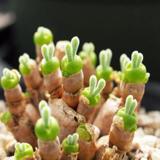

真相是:煤渣用来种多肉也就一般,没那么好,也没那么差,可以理解为一般配土,不需要特意去寻找使用。当时之所以会有那么多人选择用煤渣种多肉,是因为(12年以前)并没有多少颗粒土可以选择,同时还要付出昂贵的快递费用,一公斤的土估计得花个十块钱左右,哪像现在十块钱就有十斤土,还可以包邮。几乎可以说,没有土自己能自己造,而煤渣就成了不二之选,因为随手可得,几乎没有成本。
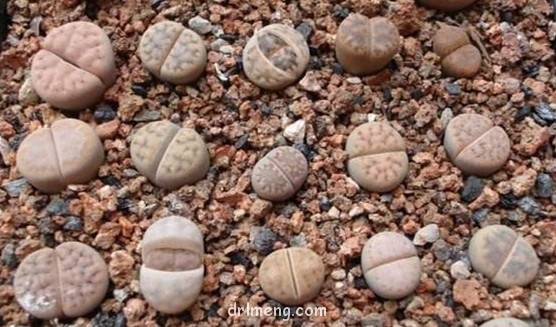
但回到今天,可以选的颗粒土太多了,而且也很便宜,反倒是煤渣成了稀罕物,尤其是对生活在城镇的花友来说,再特意去追求煤渣就有点矫情了。至于身边还有煤渣的花友,想尝试的也可以尝试下。大叔最初也曾用煤渣种过多肉,印象最深的就是泡水,碾碎,过筛下颗粒,挺麻烦的,却挺有成就感的,感觉省了好多钱...
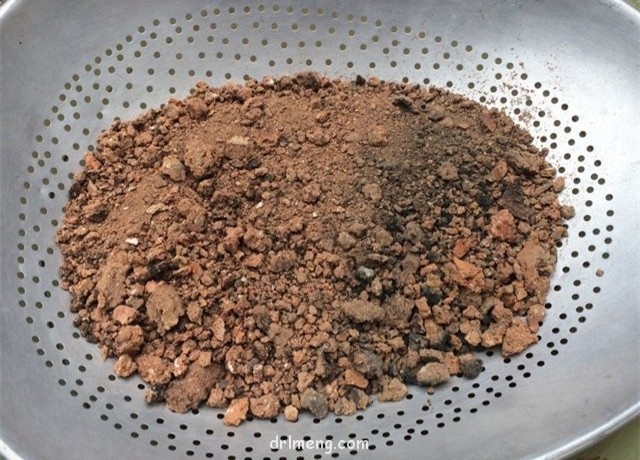
ps:煤渣的一些优点:经过高温煅烧,所以无病菌虫卵,可以充当颗粒土使用,含有一些微量元素成分(除了珍珠岩,所有的颗粒土都可以号称自己有利于植物生长的微量元素)。煤渣的一些缺点:需要泡水去碱性(尤其是北方),要过筛颗粒,粉末较多,同时易粉碎。
2
3
文章
Miss Chen
2018年05月13日

Description: This wildflower is a summer annual about 4-12" tall that is branched or unbranched. The stems are light green, terete, and pubescent. The opposite leaves are about 1" long and ¼" across; they are elliptic, oblong-lanceolate, or oblong-oblanceolate in shape. The margins of the leaves are smooth or they have a few blunt teeth toward their tips. The petioles of the leaves are short and slender. The foliage of American Pennyroyal has a strong medicinal-mint scent. Small axillary clusters of 1-4 flowers are produced from the base of each middle to upper leaf. Each flower is about ¼" long and half as much across, consisting of a 2-lipped tubular corolla, a tubular calyx with 5 teeth, 2 stamens, and a 4-celled ovary with a single style. The corolla is white or blue-violet with a contrasting color near its throat. Along the outer rim of the corolla, there is an upper lobe, 2 lateral lobes, and a lower lobe; they are short and rounded (although not always well-defined). The hairy ridged calyx has 3 upper triangular teeth and 2 lower teeth that are slender-lanceolate. At the base of each flower, there is a pair of a leafy bracts; these bracts are at least as long as the flower. The blooming period occurs from mid-summer to early fall and lasts 1-3 months; individual flowers are short-lived. At maturity, each fertile flower is replaced by 4 nutlets. This wildflower reproduces by reseeding itself. It occasionally forms colonies at favorable sites.
Cultivation: The preference is full sun to light shade, mesic to dry conditions, and soil that is rocky or loamy. Plants that are grown in sunny locations require more moisture than those growing in shade. Barren or disturbed locations that are largely devoid of ground vegetation are preferred, as this reduces competition from taller plants.
Range & Habitat: The native American Pennyroyal is occasional to locally common throughout Illinois, except the NW section of the state, where it is less common (see Distribution Map). Habitats include dry upland woodlands, rocky woodlands, areas along woodland trails, rocky glades, areas along railroads, roadsides, pastures, and fallow fields. This species prefers areas (whether sunny or shaded) that have been subjected to some disturbance.
Faunal Associations: Small bees pollinate the flowers, where they seek nectar and pollen. These visitors include little carpenter bees (Ceratina spp.), Halictid bees (Augochlorella spp., Halictus spp., & Lasioglossum spp.), and the dagger bee Calliopsis andreniformis. Syrphid flies may visit the flowers occasionally, but they feed on the pollen and are less effective at pollination. The strong scent of the foliage protects this plant from mammalian herbivores.

Photographic Location: An upland area of Busey Woods in Urbana, Illinois.
Comments: The most remarkable thing about this little plant is the strong scent of the foliage. Otherwise, it is rather easy to overlook. The only other species in this genus that occurs in Illinois, Hedeoma hispida (Rough Pennyroyal), has linear leaves and a milder scent; it also prefers sunnier habitats. American Pennyroyal superficially resembles Gratiola neglecta (Clammy Hedge Hyssop), but this latter species lacks any fragrance and its prefers soggy habitats (e.g., damp depressions in woodlands). Native pennyroyal species (Hedeoma spp.) have only 2 stamens per flower, while other similar species in the Mint family often have 4 stamens per flower. Because the flowers are so small, this requires a 10x hand lens to see clearly.
Cultivation: The preference is full sun to light shade, mesic to dry conditions, and soil that is rocky or loamy. Plants that are grown in sunny locations require more moisture than those growing in shade. Barren or disturbed locations that are largely devoid of ground vegetation are preferred, as this reduces competition from taller plants.
Range & Habitat: The native American Pennyroyal is occasional to locally common throughout Illinois, except the NW section of the state, where it is less common (see Distribution Map). Habitats include dry upland woodlands, rocky woodlands, areas along woodland trails, rocky glades, areas along railroads, roadsides, pastures, and fallow fields. This species prefers areas (whether sunny or shaded) that have been subjected to some disturbance.
Faunal Associations: Small bees pollinate the flowers, where they seek nectar and pollen. These visitors include little carpenter bees (Ceratina spp.), Halictid bees (Augochlorella spp., Halictus spp., & Lasioglossum spp.), and the dagger bee Calliopsis andreniformis. Syrphid flies may visit the flowers occasionally, but they feed on the pollen and are less effective at pollination. The strong scent of the foliage protects this plant from mammalian herbivores.

Photographic Location: An upland area of Busey Woods in Urbana, Illinois.
Comments: The most remarkable thing about this little plant is the strong scent of the foliage. Otherwise, it is rather easy to overlook. The only other species in this genus that occurs in Illinois, Hedeoma hispida (Rough Pennyroyal), has linear leaves and a milder scent; it also prefers sunnier habitats. American Pennyroyal superficially resembles Gratiola neglecta (Clammy Hedge Hyssop), but this latter species lacks any fragrance and its prefers soggy habitats (e.g., damp depressions in woodlands). Native pennyroyal species (Hedeoma spp.) have only 2 stamens per flower, while other similar species in the Mint family often have 4 stamens per flower. Because the flowers are so small, this requires a 10x hand lens to see clearly.
0
0
文章
权问薇
2018年05月13日


基本形态与特性
它属于常本类植物,最粗壮的植株大约可以生长到12米左右,表面光滑无凹痕,开花时以聚伞状的花序为主,花朵大约有两片到三片,花色为浅黄色。其中果实为椭圆形,果皮稍薄,易碎。种子形状为长圆形,它的花期时间为5月,果期时间为7月份,可入药使用。

播种繁殖
待其果种成熟后,进行收集,收集完成后,可直接进行播种繁殖。播种时要备有以下材料:腐殖土、豆渣、菜园土等。将三种原材料按比例进行混合使用,然后直接在花盆中加土过半数,再铺上一层果种,果种保持的间距为3厘米左右,再覆上约1厘米的土。因为植株果期时间较长持续的时间较长,需要一定的耐心与细心呵护。等到果种成熟时,其外形为椭圆形,果皮稍薄,易碎,因此在收获时应尽量轻拿轻放。

分株繁殖
分株进行时间多在秋季进行,要先选择生长了5年以上的成株,在保留原有根系的前提下将上部老根用工具去除掉,这样能使它上部分的花蕾不开花,得到足够的养分支持。再将它进行根茎分离,要用利器切割,保证根茎完整即可,最好预留真叶3片以上,然后准备深一点的花盆进行种植,按照正常方式进行移盆与栽培,这样能得到的品种才能更好。
注意事项
植株虽然有大价值,从跟到叶都是宝,但在使用时只可外敷,不能内服,在使用之前需要向相关人士进行咨询。

0
0








